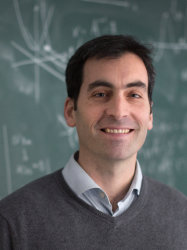BibTex format
@article{Osherson:2020:10.1007/s10909-020-02415-4,
author = {Osherson, B and Filippini, JP and Fu, J and Gramillano, R and Gualtieri, R and Shaw, EC and Ade, PAR and Amiri, M and Benton, SJ and Bock, JJ and Bond, JR and Bryan, SA and Chiang, HC and Contaldi, CR and Dore, O and Fraisse, AA and Gambrel, AE and Gandilo, NN and Gudmundsson, JE and Halpern, M and Hartley, JW and Hasselfield, M and Hilton, G and Holmes, W and Hristov, VV and Irwin, KD and Jones, WC and Kermish, ZD and Mason, P and Megerian, K and Moncelsi, L and Morford, TA and Nagy, JM and Netterfield, CB and Padilla, IL and Rahlin, AS and Reintsema, C and Ruhl, JE and Runyan, MC and Shariff, JA and Soler, JD and Trangsrud, A and Tucker, C and Tucker, RS and Turner, AD and Weber, AC and Wiebe, D and Young, EY},
doi = {10.1007/s10909-020-02415-4},
journal = {Journal of Low Temperature Physics},
pages = {1127--1136},
title = {Particle response of antenna-coupled TES arrays: results from SPIDER and the laboratory},
url = {http://dx.doi.org/10.1007/s10909-020-02415-4},
volume = {199},
year = {2020}
}

